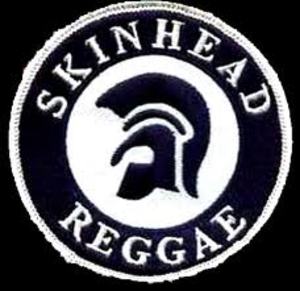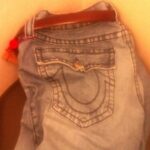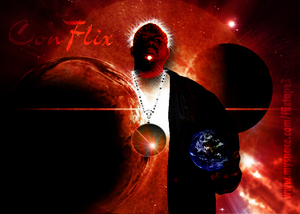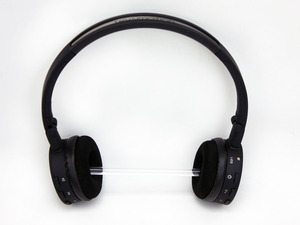Bald head, tight-pressed jeans, a sharp-cut Fred Perry polo shirt and various colors of Dr. Marten boots … this combination can only be a sign of one thing: skinheads. Skinheads are now a well-known part of the American consciousness, perhaps because a month doesn’t go by without the news reporting some racist skinhead violence in this city or that. They have been on talk shows, featured in investigative reports, and have even been portrayed in big budget films, such as Romper Stomper and American History X. But none of these films or shows have really talked about who or what skinheads are, where they come from and where they’re going.
Skinhead origins began back in the early to mid-1960s in England, forming out of a lively dancehall scene created by Jamaican immigrants known as Rude Boys, who listened to lively music called ska, and a subculture group known as the Mods. Rude Boys were a sharp-dressed working-class subculture that tended to hang out in crews (a gang) and frequent large clubs known as dancehalls. They were known to wear tight-cut suits, sharp two-tone shoes, and pork pie hats. Rude Boys were also known for their love of violence. Mods were middle-class white kids who broke off from an earlier movement known as the Teds. The Ted movement had turned into leather-jacket wearing gangs now known as Rockers. Mods were in direct conflict with rockers (if you have ever seen the move Quadraphenia, it is Mods vs. Rockers): They preferred pressed suits and a clean-cut look. Mods and Rude Boys looked very similar and both had a love for sharp looks, ska tunes and gang fighting. The two middle-class cultures meshed perfectly.
“But hey, I thought skinheads didn’t like black people?” you ask. We will get to that in a minute…
Toward the end of the ’60s, many of the original Mods had begun to break away from the scene, going off to work, getting married or perhaps just getting tired of the Mod life. With this slow dying of the original Mod culture, a working class revival started taking place in the remaining Mods. They began cropping their hair really close, wearing heavy, steel-toe boots, Levi’s and, of course, suspenders. The look was meant to resemble a middle-class factory worker, but it had more uses than just fashion. With no hair, one couldn’t have it pulled during a fight. Tight jeans and shirts weren’t easily grabbed either, and with steel-toe boots you could do some serious kick damage. This new style was easily definable by 1968 and came to be known as skinheads. This new youth culture pretty much still did the same stuff as the previous Mods; they hung in dancehalls with the Rude Boys, drank beer and got into brawls.
This new working-class movement quickly spread all over England. Skinhead gangs were identified in almost every city. At first, the skinhead gangs tended to prey on Rockers and Glams, and sometimes Asian youths and gays. Because of these targets, the public didn’t really take notice. But in 1968, when a reputed 4,000 skinheads attended a soccer event and broke into a massive riot afterward, the public noticed fast. It was around this time that a large influx of Pakistani immigrants also gained visibility in England. The middle-class Jamaican and English Skinheads, as well as Rude Boys, started blaming their lack of jobs on these immigrants, and some of the first racist skinhead violence started. It was known as Paki Bashing.
As the ’60s rolled into the ’70s, Jamaican Rude Boys started disappearing, and younger kids attracted to the Skinhead movement were more removed from the earlier racially diverse group. These younger Skins became obsessed with their local soccer teams, and many of the gangs started wearing colors similar to their favorite team. These were the true years of the soccer hooligans. These Skinheads also started looking slightly different from their earlier brothers. They tended to grow their hair out just a bit, and favored thick, bushy sideburns. This look was often referred to as the SuedeHead.
During this same period, England was going through a rough time with its economy. Unemployment was way up and the rich seemed to get richer while the poor … well, they couldn’t really get any poorer. The old neighborhoods of the Skinheads were becoming run down slums. Joblessness always tends to breed resentment, and this resentment shined out in a group called the National Front. The National Front was a racially motivated group who wanted to eliminate West Indian and Pakistani (and many other) immigrants in England, for the purpose of giving jobs back to the white citizens. The National Front needed recruits and publicity, and what better place to get it than in the young, already violent Skinhead movement. National Front actively began recruiting among the jobless Skinhead youths whose gangs made up a large part of the decaying middle-class neighborhoods of London and other cities. This is the birth of what we know today as the racist (white power or nazi) skinhead.
In the late 1970s, Punk Rock took its hold on the youths of England. Punks were everywhere, and with them came a revival in the earlier ska and Mod look and sounds of the 1960s. With this resurgence came a growth spurt again in the non-racist Skinhead movement. Skins and Punks mingled freely with Mods and Rude Boys … it seemed like glorious times again. But the Punk movement began degrading into a glam-type record-company controlled scene that many of the new Skinheads really resented. These new Skins started their own music, dubbed Oi by Gary Bushell, because the slang term Oi was popular among the Skinhead youth. The years in the late ’70s and early ’80s were filled with Skinheads and popular Skinhead bands, such as Sham69, Oppressed, 4 skins and many others. Most of these bands were composed of non-racist Skins motivated more by class difference than the color of one’s skin. But the racist Skins still held their turf and caused many problems at concerts during these years.
The movement of Punk Rock into the United States also brought with it the subculture of Skinheads. While in the early Punk years, the Skinhead look really only identified someone as a Punk Rocker, the Skinheads soon came into their own in the U.S. In the mid-80s the Punk and Hardcore scene in the States was booming, and it was at this time that some of the first real Skinhead gangs started showing up at concerts all over the country. These gangs were often composed of big guys with shaven heads, combat boots and a very violent attitude toward blacks. Most of these Skinhead gangs grew in the Southern states, the Northwest and down in Texas. New York, California and areas like Miami did have nazi Skinhead gangs, but they were often overshadowed because of the large multicultural influence on the youth culture in those areas. Many concerts became violent, people were beaten, and things generally started getting bad for anyone not affiliated with the local nazi gang (that is, if they controlled your scene).
From many a witnessed beating, the hatred for racist ideals and sometimes a love of traditional Skinhead culture came another new movement in the Skinhead scene: the SHARP Skins (Skinheads Against Racial Prejudice). The SHARPS ganged together in the same fashion as their nazi cousins, but their purpose was obviously to battle the growing number of racist Skinheads across the country. The SHARP movement flourished in many areas, and more and more racist Skinhead groups began moving underground and forming affiliations with the KKK and other nationally organized white supremacist groups.
Today, everything seems to have gone full circle again. The majority of Skinheads seen at concerts and clubs are typically non-racist, traditional Skinheads, mixing with Mods and the raging new ska scene. The racist Skinheads tend to visit their own scenes and take part in more politically motivated events at a national level. Both groups still exist, both still have quite a strong following (although each will tell you the opposite about their rival group) and both are still steeped in the rich history of youth culture.







